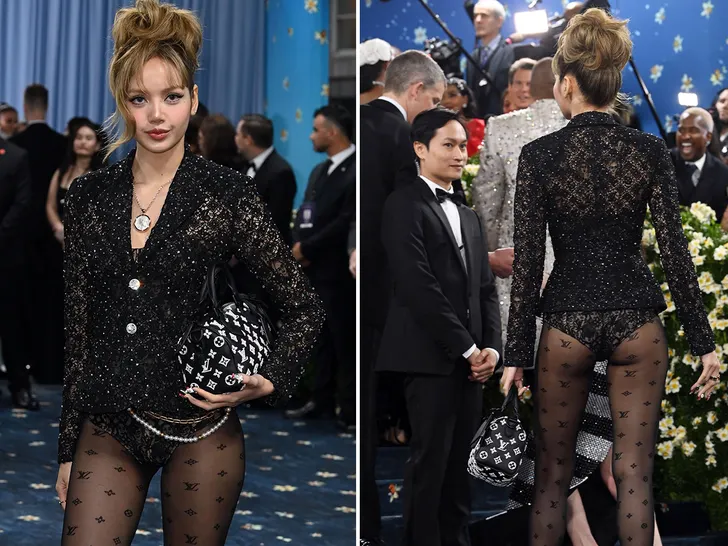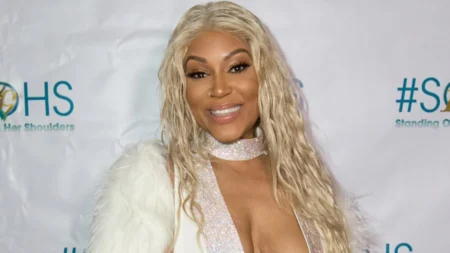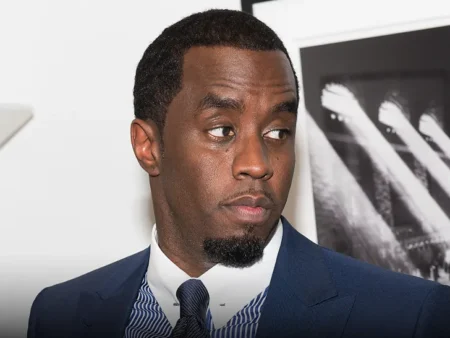The 2025 Met Gala, themed “Sleeping Beauties: Reawakening Fashion” with a sub-focus titled “Superfine: Tailoring Black Style,” was meant to honor the influence of Black culture on global fashion. But BLACKPINK star Lisa quickly found herself at the center of backlash after sporting an outfit that prominently featured the face of Rosa Parks — on her underwear.
The image spread like wildfire on social media, with some critics accusing Lisa of cultural insensitivity and turning an iconic civil rights figure into a fashion statement. But as outrage built online, the truth behind her outfit has come to light — and it’s shifting the narrative in a major way.
A Creative Vision Led by Black Artists
In a powerful clarification, Pharrell Williams, co-chair of the 2025 Met Gala and Louis Vuitton’s creative director, stepped in to explain the real story. According to Pharrell, Lisa’s outfit was not a random or offensive choice, but a carefully curated piece of wearable art designed to honor the Black community and its cultural legacy.
Lisa’s ensemble was a collaboration between Pharrell and celebrated African American painter Henry Taylor, known for his raw, emotive portrayals of Black life and history. Taylor personally embroidered the image of Rosa Parks onto Lisa’s undergarments — a bold design intended to symbolize the resilience and dignity of Black women, even in unexpected spaces.
“Lisa didn’t just wear a fashion piece — she wore a story,” Pharrell stated in a behind-the-scenes video. “This was about reclaiming space, about honoring the power of Black women and the influence of Black culture that’s often borrowed, but rarely credited.”
The Meaning Behind the Message
Far from being a shock tactic, Lisa’s look was a deliberate statement about visibility and appropriation. The theme “Superfine” drew directly from dandyism in Black fashion history — a style tradition rooted in subversion, elegance, and self-expression in the face of systemic oppression.
By placing Rosa Parks’ image in an intimate, unexpected place, Henry Taylor aimed to challenge perceptions, raise questions, and spark dialogue. Lisa, as a global K-pop icon, was the canvas chosen to carry that message to the world.
Internet Divided, But Many Rethinking the Backlash
Initially, critics online were quick to slam the outfit as tasteless or exploitative. Comments ranged from “tone-deaf” to “disrespectful.” But after Pharrell’s detailed explanation — and confirmation that two prominent Black creatives were behind the concept — public opinion has begun to shift.
Fans and cultural commentators alike are now reflecting on how context and intent matter, especially in fashion spaces where symbolism plays a major role.
One user wrote:
“I admit I was upset at first. But knowing Pharrell and Henry Taylor created this with purpose really made me see it differently. Lisa brought their vision to life — she wasn’t mocking anyone.”
Lisa’s Role: The Messenger, Not the Mastermind
It’s important to note that Lisa was not the creative director behind her look. Her participation, while controversial, was based on trust in the designers and artists she collaborated with. The backlash she faced underscores a broader issue in celebrity culture — the tendency to criticize without context.
Pharrell’s team emphasized that Lisa was fully briefed on the artistic vision and stood by it, understanding the risks involved. Her decision to wear the piece was not about provocation but about honoring history and supporting Black creatives in one of the world’s most-watched fashion events.
A Broader Conversation About Representation
The Rosa Parks embroidery wasn’t the only moment of cultural commentary at the Met Gala. This year’s theme spotlighted Black tailoring, heritage, and innovation, inviting guests to reflect on how deeply fashion owes its richness to the Black diaspora.
Lisa’s ensemble — now viewed in its full context — adds to that narrative, sparking conversations about who gets to wear cultural symbols, how they are presented, and what fashion can say about our values.
Final Thoughts
While the initial outrage surrounding Lisa’s Met Gala appearance was understandable, it also reveals how easily context can be lost in a social media-driven world. Thanks to Pharrell and Henry Taylor’s transparency, what once looked like a scandal now emerges as one of the boldest statements of the night — a reminder that fashion, when intentional, can carry powerful meaning.
As the dust settles, Lisa’s controversial look may go down as a defining moment of the 2025 Met Gala — not because it shocked, but because it dared to tell a deeper story.








